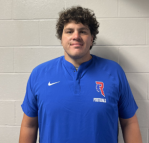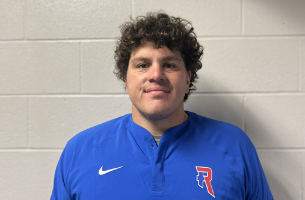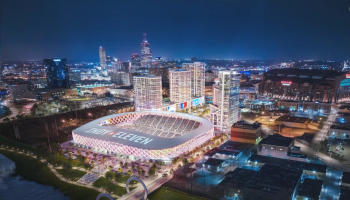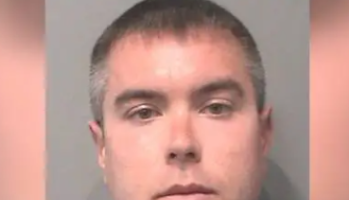TERRE HAUTE, Ind.— On June 11, 2001, the six year journey that Timothy McVeigh began in front of the Murrah Federal Building in Oklahoma City, ended with his departure from this planet at the hands of the federal government.
Hear the WIBC documentary: Execution in Indiana: The OKC Bombing and Timothy McVeigh
McVeigh was the first person to be executed by the federal government since 1963. His crime, along with partner Terry Nichols, was building a bomb that he put inside of a rented Ryder truck. He parked it in front of the federal building and detonated it on the morning of April 19, 1995.
When the bomb went off
When the bomb went off at 9:02, the blast killed 168 people, hurt over 300 more and damaged or destroyed buildings for 16 city blocks.
It was the deadliest act of terrorism inside the United States prior to the Sept. 11, 2001, attacks on the World Trade Center in New York.
Some of the people killed in the bombing were children, attending daycare inside the building.
The reasoning of a mass murderer
McVeigh was caught about an hour after the bombing by a trooper with the Oklahoma Highway Patrol. In the two years that followed the bombing before the trials of McVeigh and Nichols, the feds conducted more than 28,000 interviews.
McVeigh’s reasoning described by one of his attorney’s, Stephen Jones, interviewed in his hometown by WIBC’s John Herrick, when Herrick was a news anchor in Enid, Oklahoma at 95.7 KXLS.
“The Oklahoma City bombing occurred because a motivation for it was what happened at Ruby Ridge and what happened with the Branch Davidians,” said Jones.
The investigation and the trial
In the investigation leading up to the 1997 trial in a federal court in Colorado, it was discovered that Nichols and McVeigh, along with co-conspirator Michael Fortier, had been associates since Army basic training in 1988. They had been angry at the federal government since Ruby Ridge and the siege in Idaho.
That anger grew with the siege at Waco and the Branch Davidians, in which men, women and children were killed by fire and bullets by federal agents.
The plot was originally a series of assassinations as revenge. One of the targets was US Atty. Gen. Janet Reno. But, McVeigh decided that his message would be better heard if he took down a federal building, making sure that agencies like the ATF, DEA and FBI were affected. The building in OKC fit the bill. The 9-story building had been the target of a plot that was not carried out in 1983. The man responsible, Richard Snell, was coincidentally executed the same day as the Oklahoma City bombing, for several murders.
McVeigh and Nichols stole or procured the materials to build the bomb, which included ammonium nitrate, commonly used in fertilizer.
“I have a duty. I don’t have a conflict of interest and lawyers are supposed to accept court appointments unless they have a conflict of interest, no matter the impact on themselves personally,” said Jones, about being appointed to serve on McVeigh’s legal team.
The sentence and execution
Though they acted as partners, McVeigh was sentenced to death as the person who detonated the bomb. Nichols was sentenced to life in prison without the possibility of parole.
The execution on June 11, 2001, was covered by media from all over the country, including WIBC, and Network Indiana.
“Timothy McVeigh died with his eyes open,” said CBS correspondent Byron Pitts, before reading McVeigh’s final written statement, which was a word for word copy of the poem “Invictus”, by William Ernest Henley.
“The warden did say, ‘Inmate McVeigh, you may make your last statement.’ At that point there was silence,” recalled Terre Haute Tribune Star reporter Karin Grunden, from the podium following the execution, which was transmitted to Oklahoma City, via closed circuit TV, for family members to witness.
The story continues
The end of the story after six years was an end only to Timothy McVeigh’s life and potential for evil. His partner, Terry Nichols, is serving 161 life sentences on state murder convictions. Michael Fortier has finished his sentence, lighter because he and his wife both testified against Nichols and McVeigh.
The legacy of the bombing is those large concrete barriers at federal buildings across the United States, the memoery that informs caution that some people are willing to sacrifice their fellow Americans to get their message across, and a memorial where the Murrah Federal Building once stood nine stories tall.












